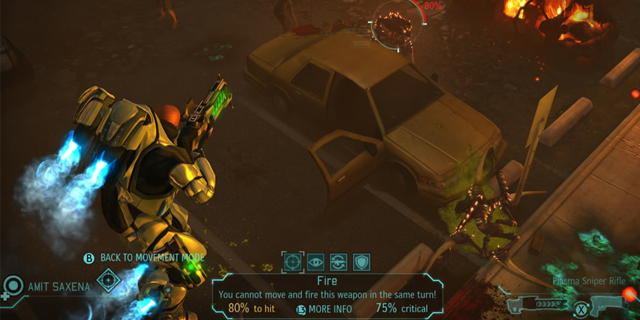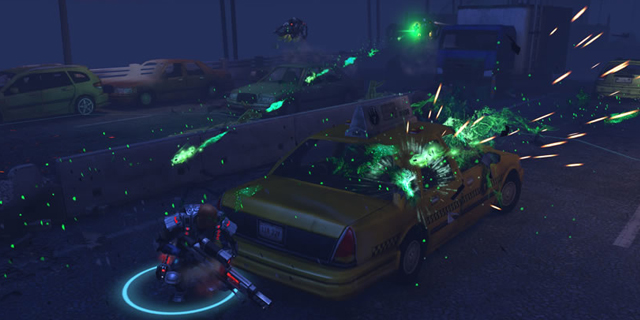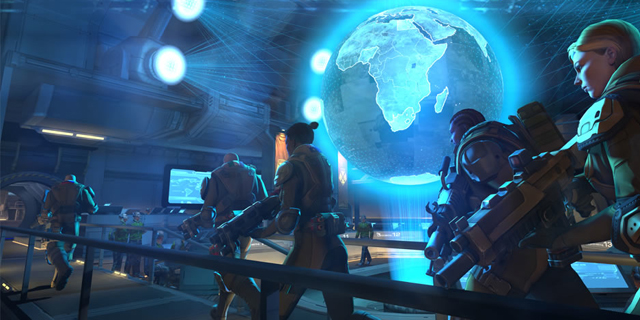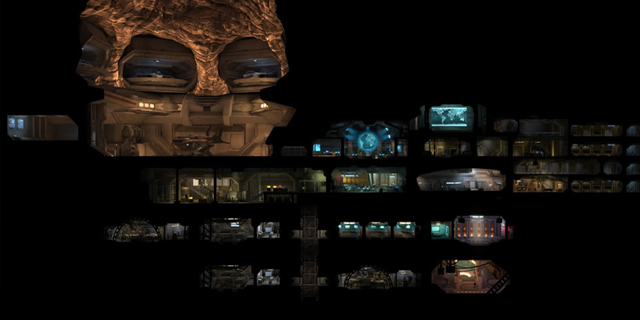
XCOM: Enemy Unknown, more than anything else, is a game about choice. There are no light side-dark side choices like in Knights of the Old Republic. The choices made in XCOM affect your play from mission to mission, while you drive toward the singular goal of pushing back and eventually defeating an alien invasion. Do you spend credits on satellite coverage to make things more manageable in the long haul, or do you put those credits toward upgrading from ballistic weapons to laser weapons which makes your squad more likely to survive in the short term? Do you research interceptor technology to make shooting down UFOs easier, or do you prioritize capturing aliens alive for the weapons and ammo research bonuses? You’ll never have enough credits and resources to cover everybody to the extent that you’d like to, and being forced to make those choices instead of just leveling up for a while make XCOM: Enemy Unknown one of the most replayable games in my library.
What XCOM does right it does very right, what it does wrong, it does very wrong. Focusing on the positives first, XCOM is a tense game. Your characters can and will die in your quest to protect the Earth from alien invaders. And that’s okay. Your first few times through the game you will probably lose, and that’s okay, too. Why is that okay? Because you learn by doing. There are no do-overs here, and the way to learn proper tactics is to mess them up and not repeat your mistakes. You’ll stop letting your last soldier reveal portions of the map after he not only reveals some of the map, but finds a cyberdisc and a couple of mutons as well. You’ll stop dashing around like a madman when the enemy starts flanking you and showing you situations where overwatch would be useful.

For my first outing (and to ensure I could make it to the endgame), I played on normal difficulty. In the beginning you can only take a squad of four people on any given mission, and feeling underpowered right off the bat is great incentive to get an officer’s school built and scrounge credits for the two squad size upgrades. The tactical combat feels more like a board game than a computer game, and I’m okay with that. I’m a huge fan of board games, and the rules for cover and flanking are easy to grasp. It doesn’t matter if your heavy’s shoulder is poking around the heavy cover; the game says your unit is in cover and any enemy taking shots at him take an aim penalty for it.
The combat itself feels tense, and your units feel vulnerable out there. For a good portion of the game you’re outgunned, as the aliens all carry plasma from day one while you have to tech up from ballistics to lasers to plasma. A clear head can win the day, though, as it’s actually effective to use high cover, smoke grenades and flanking maneuvers against the enemy. You can (and should) also take the enemy alive after researching arc throwers, even though it’s dangerous. This is a great way to save some money, as captives bring their gear back to base for you. In my first game, I eventually outfitted every soldier who could carry one with a light plasma rifle and a plasma pistol without ever manufacturing one myself. This meant that I could allocate those resources to other things, instead of waiting for my research to finish and then going on down to engineering and spending credits and weapon fragments to build my own. I would much rather use those resources on weapons that must be built if I want to use them, like plasma variants of the sniper rifle.
After a few engagements I start to think to myself, “XCOM isn’t so hard! I must have just not understood it as a kid.” Then UFOs started showing up and my interceptors started getting shot down. I hadn’t invested heavily in outfitting them with better weapons, and they were suffering for it. This meant three things: I was losing units that would need to be replaced, I was missing out on missions where I could gain valuable XP and resources for research and engineering, and panic was increasing worldwide because the XCOM guys kept losing UFOs due to slow, underequipped interceptors and spotty satellite coverage. The choices that I made seemed good at the time, but after that council report it was clear that I had focused too much on the small scale and nowhere near enough on the large scale.

Unfortunately, what XCOM does wrong, it does very wrong as well. The PC interface isn’t laid out very well, and the game controls much more naturally with a controller. It is obvious that Firaxis created the console UI first, and then reworked it for mouse and keyboard. Thankfully I have a 360 pad and am able to order units around just fine. When I had to switch to the mouse because of a bug with a late-game facility, I couldn’t switch back to the 360 pad without saving the game, exiting and restarting. Playing the mission with mouse controls highlighted a few things. It would be very useful to be able to toggle an overhead view, even a simple one, when maneuvering through downed ships. Mis-clicks can mean a unit’s death, as there are no takebacks in XCOM. Luckily when I mis-clicked due to an elevation issue (the game couldn’t decide if I wanted to move forward and take cover, or jump down the ledge and stand out in the open) it didn’t result in a dash to doom, and I could move the unit right back to their original position. She couldn’t take an action after that, but at least she was safe.
Other annoyances make it seem like the game could have used more time in testing than it got. SHIVs (XCOM’s robotic units) routinely don’t work as advertised. Sometimes they show up for combat as a headless, weaponless human soldier. Sometimes they show up as a robot platform with no weapons. Regardless, in a game about proper usage of limited resources (both in the strategic layer and the tactical layer), it’s disheartening to see that one of your units is completely unusable. I’ve had units refuse to take cover, I’ve had enemies teleport behind my line to flank (not floaters who are designed with this ability), and I’ve had experience numerous computer lock-ups. I’m not playing on a supercomputer here, but I’m smart enough to ensure that my PC exceeds minimum specs before picking up a game, and the number of freeze I’ve encountered is just plain unacceptable. Firaxis is good about supporting its titles, so I won’t be surprised when a patch hits to make the game more stable and make SHIVs a valued part of my team.
In addition to the robust and replayable single-player campaign XCOM is a tactical game that comes with a multiplayer component. Each player has a preset amount of points to spend to create a mixed team of humans and aliens. If you want to take a human heavy, a sectoid, a muton and a human assault, you can do that as long as you have the points to purchase them and the upgrades that you’ll want. After teams are chosen, combat plays out exactly like the tactical portion of the single-player game, and it is wonderful. You’re using abilities against another player, who is trying to be careful, instead of a squad of aliens, that are acting according to their AI algorithms. Human opponents will feint and flank, they will act in ways that you don’t expect, and such a simple addition make XCOM a game that I will play even when I am frustrated with losing a classic ironman campaign.

Despite a few complaints, XCOM is a wonderful game that brings challenge back to video games, and I firmly believe that everybody should experience it. The little moments are too good to miss, and I want everybody to be as excited as I am when a rookie unit makes a low-percentage shot to take down that muton who would have slaughtered your best unit next turn. I want everybody to be as scared as I was the first time they encountered late-game units and saw what mind control was really all about. But most of all, I want XCOM: Enemy Unknown to do well, because Firaxis took an old property, updated it well, improved where they could (move then shoot is so much easier to deal with than time units from the original) and created something evocative of the original with a spirit all its own in a genre with next to no representation in today’s market. And it certainly doesn’t hurt that it’s exceptionally fun, and it has its claws in me to the extent that I think about it while I’m at work and have been waking up early since I got it to get a mission in before leaving for the day.
Pros: Meaningful player choice, exciting and tense combat, rewards intelligent play rather than grinding, random maps and units (both soldiers and enemies) makes for great replay vale
Cons: The tutorial is underdeveloped; you’ll spend your first game wondering how to build interceptors (look in the hangar) and why your satellites aren’t immediately available like everything else built in engineering



















